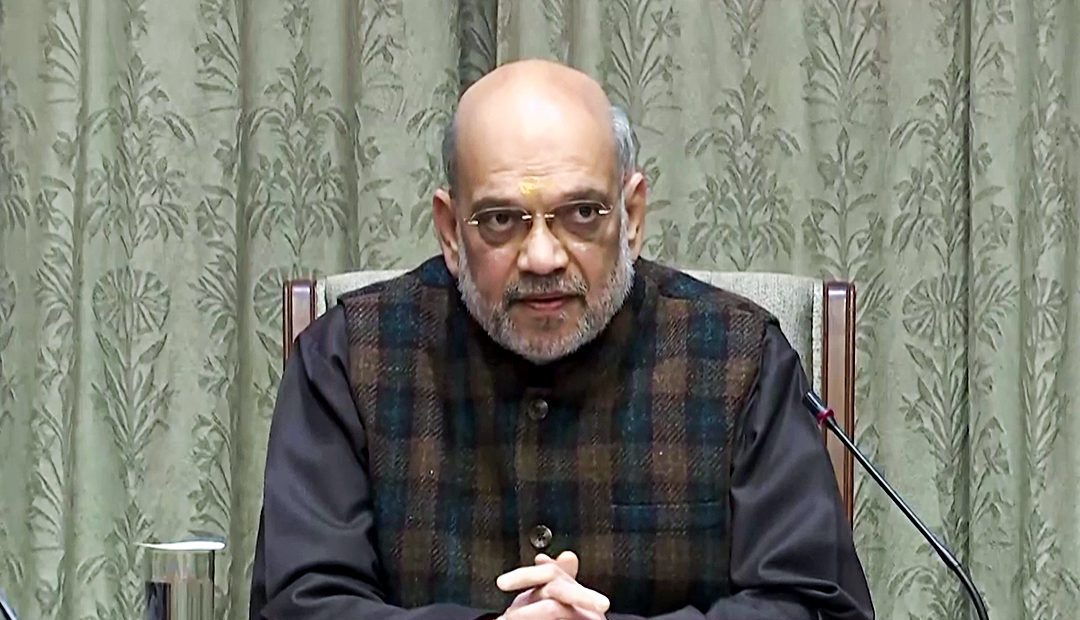In a major breakthrough in the country’s fight against Maoist insurgency, security forces have eliminated 31 Naxalites in what has been termed the biggest-ever anti-Naxal operation in India. The 21-day-long joint operation was carried out at Karreguttalu Hill (KGH), situated along the Chhattisgarh-Telangana border—a region long considered a formidable stronghold of Naxal activity.
Union Home Minister Amit Shah lauded the security forces for the historic success. In a post on X, he said the area once ruled by red terror now proudly hoists the Indian tricolour. He informed that KGH was previously the unified headquarters of major Naxal outfits including the PLGA Battalion 1, Dandakaranya Special Zonal Committee (DKSZC), Telangana State Committee (TSC), and the Central Regional Committee (CRC). It served as a critical center for Naxal training, strategy formulation, and arms production.
The Home Minister highlighted that the operation, successfully concluded within 21 days, did not result in any casualties among the security personnel. He congratulated the CRPF, Special Task Force (STF), and District Reserve Guard (DRG) personnel for their courage in carrying out the mission under challenging weather and terrain conditions. He reaffirmed the government’s resolve to root out Naxalism under the leadership of Prime Minister Narendra Modi and reiterated that India is on track to become Naxal-free by March 31, 2026.
Senior officials, including CRPF Director General Gyanendra Pratap Singh, Chhattisgarh Director General of Police Arun Dev Gautam, and Additional Director General (Anti-Naxal Operations) also briefed the media in Bijapur on the operation’s details. According to officials, 31 uniformed Naxalites—including 16 women—were killed, and 35 weapons were recovered following 21 encounters during the course of the mission. So far, 28 of the deceased have been identified, and a total bounty of ₹1.72 crore had been announced for them.
The operation, which took place between April 21 and May 11, was the result of detailed intelligence gathering and strategic planning. Inputs received from multiple agencies led to the formation of a multi-agency team tasked with collecting and analyzing technical and human intelligence. Based on this intelligence, security forces were able to detect Maoist hideouts, locate arms caches, and recover a large cache of improvised explosive devices (IEDs), BGL shells, and other materials. Officials stated that the use of real-time information helped prevent multiple IED-related casualties.
Karreguttalu Hill, a vast and difficult terrain measuring around 60 kilometers in length and up to 20 kilometers in width, had become a refuge for 300–350 armed Maoist cadres, including members of the PLGA’s technical department and allied units. Over the past two and a half years, the Naxalites had entrenched themselves in the area, prompting a need for a large-scale and carefully executed security response.
During the course of the operation, security forces destroyed 214 hideouts and bunkers and recovered 450 IEDs, 818 BGL shells, 899 bundles of codex wire, detonators, and nearly 12,000 kilograms of food supplies. Additionally, four Naxal technical units engaged in the production of weapons and explosives were dismantled. Authorities believe that several senior Naxal cadres may have been killed or seriously injured, though the difficult terrain has hindered full recovery of all bodies.
Despite daytime temperatures exceeding 45 degrees Celsius and treacherous terrain, the morale of the troops remained high. Eighteen personnel from the CRPF’s elite CoBRA unit, STF, and DRG sustained injuries, mostly due to IED blasts, but all are currently in stable condition and receiving treatment.
The operation also reflects the broader success of the government’s ‘whole-of-government’ approach to combating Maoism, which combines robust security action with focused development initiatives in affected regions. Under the Home Ministry’s Joint Action Plan, new security camps have been established in strategic areas, and several central schemes are being implemented to bring development and governance to previously neglected regions.
According to official data, 197 hardcore Naxalites have been neutralized in the first four months of 2025 alone. The number of most-affected districts has dropped from 35 in 2014 to just 6 in 2025. Naxal-related incidents have significantly declined from 1,080 in 2014 to 374 in 2024. Meanwhile, the number of security personnel killed annually in Maoist violence has decreased from 88 in 2014 to 19 in 2024. In the same period, the number of Naxalites killed in encounters has risen sharply, and the number of surrenders remains high, with 928 surrendering in 2024 and 718 so far in 2025.
Infrastructure in affected areas has also seen considerable enhancement. Since 2019, over 320 security camps have been set up, along with 68 night-landing helipads. The number of fortified police stations has increased from 66 in 2014 to 555 by 2025.










